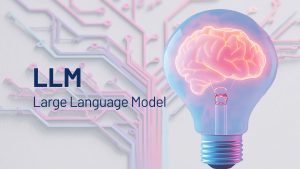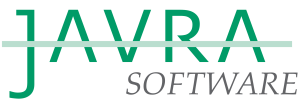
LLM Data Extraction: Automating Business Processes with AI
In today’s fast-paced business environment, organisations deal with huge volumes of unstructured data across emails, PDFs, scans, and other documents. Manual extraction is slow, error-prone, and expensive. LLM-powered data extraction automates the retrieval, structuring, and interpretation of information from these sources. The result is faster processing, lower operational effort, and better decisions. As AI evolves, businesses adopting LLMs early gain a lasting competitive edge. What Is LLM Data Extraction? LLM data extraction uses AI models to process unstructured or semi-structured data from emails, documents, and other digital formats. Instead of relying on predefined templates or brittle rule-based automation, LLMs understand context and meaning, then convert content into usable structured data. This approach is particularly valuable for businesses handling high volumes of inbound information, including: By automating extraction, LLMs improve speed, accuracy, and scalability while reducing dependence on manual processing. How LLMs Extract and Process Data LLM-powered extraction typically follows a multi-step flow that mirrors how people read and interpret documents. 1. Parsing and understanding documents LLMs analyse text from emails, PDFs, and scans to capture key business information. This often includes: 2. Optical Character Recognition (OCR) for scanned documents Many documents still arrive as scans or images. AI-powered OCR converts them into machine-readable text so LLMs can process them. Modern OCR can also interpret handwriting and low-quality inputs. 3. Contextual understanding and data structuring Unlike traditional automation tools that need strict formatting, LLMs interpret meaning based on context. This enables them to: 4. Handling complex or ambiguous requests Real-world documents are messy. LLMs manage this by applying reasoning techniques such as: When confidence is low, AI agents can flag the case for human review or send automated clarification requests. Key Use Cases of LLM Data Extraction LLM extraction supports workflows where information arrives inconsistently or in multiple formats. 1. Automated order processing Businesses receiving orders via emails, PDFs, or forms can use LLMs to extract order details, validate specifications, and send structured data into ERP or CRM systems. This eliminates manual entry and accelerates fulfilment. 2. Customer support automation LLMs can read incoming customer emails, extract intent and key details, and generate fast responses for common requests such as: Support teams handle fewer repetitive tasks and can focus on higher-value cases. 3. Invoice and payment processing LLM extraction streamlines finance operations by: This improves accuracy while reducing workload in accounts payable and receivable. 4. Legal and compliance document processing LLMs help legal teams by extracting key clauses, obligations, and terms from contracts and regulatory documents. This speeds up review without manually scanning long files. 5. HR and recruitment automation HR teams can automate intake by using LLMs to: Hiring moves faster with more structured evaluation. Advantages of Using LLMs for Data Extraction Compared to rule-based automation, LLMs introduce accuracy, flexibility, and scalability. Future of LLM Data Extraction and AI Automation As LLMs advance, automation will become broader and more intelligent. Key trends include: Businesses that adopt early will gain long-term advantages in speed, cost reduction, and customer engagement. Conclusion LLM-powered data extraction is transforming business operations by automating complex workflows, improving accuracy, and speeding up response times. Whether it’s processing orders, managing invoices, or handling customer inquiries, AI-driven extraction helps organisations scale without increasing manual workload. By combining LLMs with OCR, image understanding, and business logic, companies reduce operational friction while improving data integrity and compliance. The future of business automation is AI-native — and organisations embracing it now will lead in efficiency and innovation. FAQs 1. How do LLMs handle different document formats? LLMs combine natural language processing, OCR, and contextual reasoning to extract and structure data from emails, PDFs, spreadsheets, and images. 2. Can LLMs process handwritten text? Yes. Advanced OCR enables LLMs to recognise handwritten content from scanned documents. 3. What industries benefit most from LLM-powered data extraction? E-commerce, finance, healthcare, legal, logistics, and any document-heavy sector benefit strongly. 4. Are LLMs completely replacing human agents? No. LLMs automate repetitive tasks, but humans remain essential for complex cases and high-stakes decisions. 5. How can businesses implement LLM-powered data extraction? Companies can integrate LLM solutions into ERP, CRM, or support platforms via APIs, cloud AI services, or custom models tailored to their workflows.
